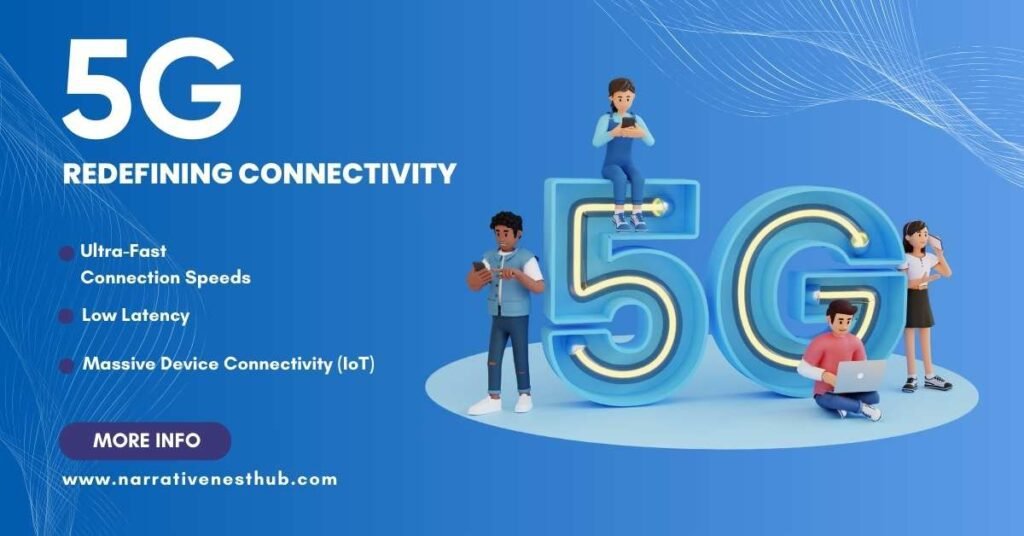5G Network: 7 Incredible Benefits You Can't Ignore
The advent of 5G technology marks a significant leap in the evolution of wireless networks. This article explores what the 5G network is and highlights seven incredible benefits that make it a transformative technology.
Table of Contents
Summary
This blog will delve into the concept of the 5G network, explaining what it is and how it works. We will highlight seven key benefits of 5G technology, providing practical examples and an external link for further reading. Additionally, an image will be included to complement the content. Does this summary meet your approval?

Benefits You Can't Ignore
The digital world is abuzz with talk of 5G, the fifth generation of mobile network technology. As we stand on the brink of this technological revolution, it’s crucial to understand what the 5G network entails and how it can benefit us. So, let’s dive into the world of 5G and uncover seven incredible benefits that make it a game-changer.
What is the 5G Network?
It is the latest generation of mobile networks, following its predecessors 1G, 2G, 3G, and 4G. Unlike earlier generations, 5G offers significantly faster data rates, reduced latency, and enhanced capacity. It operates on higher frequency bands and uses advanced technologies such as Massive MIMO (Multiple Input Multiple Output) and beamforming to deliver unprecedented performance.
How Does 5G Work?
This technology leverages a mix of low, mid, and high-frequency bands to provide comprehensive coverage and high-speed connectivity. Low-band frequencies offer broad coverage, while mid-band frequencies balance speed and coverage. High-band frequencies, known as millimeter waves, provide ultra-high speeds but have limited coverage. By combining these bands, 5G networks can offer a versatile and powerful connectivity experience.
7 Incredible Benefits of 5G
1. Lightning-Fast Speeds
One of the most touted benefits of 5G is its lightning-fast speeds. With theoretical download speeds of up to 10 Gbps, 5G is significantly faster than 4G. This speed boost allows for seamless streaming, rapid downloads, and real-time applications such as online gaming and video conferencing without lag or buffering.
2. Ultra-Low Latency
Latency refers to the time it takes for data to travel from the source to the destination. 5G dramatically reduces latency to as low as 1 millisecond, compared to 4G’s 50 milliseconds. This ultra-low latency is crucial for applications that require real-time responsiveness, such as autonomous vehicles, remote surgery, and virtual reality.
3. Increased Network Capacity
5G can support a significantly higher number of devices per square kilometer than previous networks. This increased capacity means that more devices can be connected simultaneously without degrading the network’s performance. This is particularly important in densely populated areas and for the growing number of IoT (Internet of Things) devices.
4. Enhanced Reliability
This network offers enhanced reliability and stability, ensuring consistent performance even under heavy load. This reliability is essential for critical applications such as emergency services, industrial automation, and healthcare, where a stable connection can be a matter of life and death.
5. Improved Energy Efficiency
This technology is designed to be more energy-efficient than its predecessors. It uses advanced algorithms to reduce power consumption when devices are not in active use, extending battery life for mobile devices and reducing the overall energy footprint of the network.
6. Transformative Industry Applications
It is set to revolutionize various industries through its advanced capabilities. In healthcare, it enables telemedicine and remote surgeries with real-time precision. In manufacturing, it facilitates smart factories with automated systems and robotics. The automotive industry benefits from enhanced vehicle-to-everything (V2X) communication, paving the way for autonomous driving.
7. Enhanced User Experience
Ultimately, the combination of speed, low latency, and reliability enhances the overall user experience. Whether it’s streaming high-definition videos, participating in immersive virtual reality experiences, or simply browsing the internet, 5G elevates the digital experience to new heights.
Practical Applications of 5G
- Smart Cities: It enables the development of smart cities with interconnected systems for traffic management, public safety, and utilities, improving urban living.
- Remote Work: With its high-speed and reliable connectivity, 5G supports the increasing trend of remote work, allowing for efficient collaboration and communication.
- Education: this servicers enhances online learning by enabling high-quality video streaming, virtual classrooms, and interactive learning experiences.
Additional Resources
For more detailed information on the impact of 5G technology, check out this comprehensive guide that offers insights into the various aspects and implications of 5G networks.
Visit Our Website For those seeking assistance in web designing and technical writing. please visit Narrative Nest Hub. Our team offers economical and customized services that align with your specific needs and help you stand out in competitive world.
contact us www.narrativenesthub.com
FAQs
1. What makes 5G faster than 4G?
- It is faster than 4G due to its use of higher frequency bands, advanced technologies like Massive MIMO and beamforming, and its ability to support a higher density of devices with increased bandwidth.
2. How does 5G improve latency?
- It reduces latency through its advanced network architecture, which includes shorter transmission paths and optimized data processing techniques, resulting in near-instantaneous data transfer.
3. Can my current phone use it?
- Only phones equipped with 5G-capable hardware can access its networks. Check your device specifications or consult your mobile carrier to determine if your phone supports.
4. Is 5G safe?
- Extensive research and regulatory oversight ensure that 5G networks operate within safety limits for electromagnetic radiation. Current scientific consensus indicates that 5G is safe for public use.
5. When will 5G be widely available?
- This deployment is ongoing, with major urban areas and select regions already enjoying coverage. Widespread availability depends on infrastructure development and regulatory approvals, expected to expand significantly over the next few years.it

nice